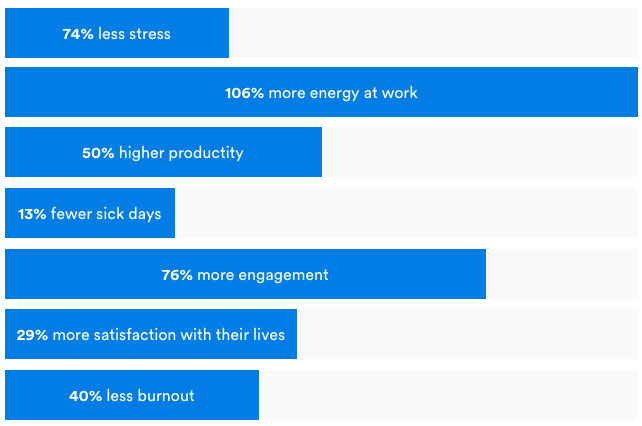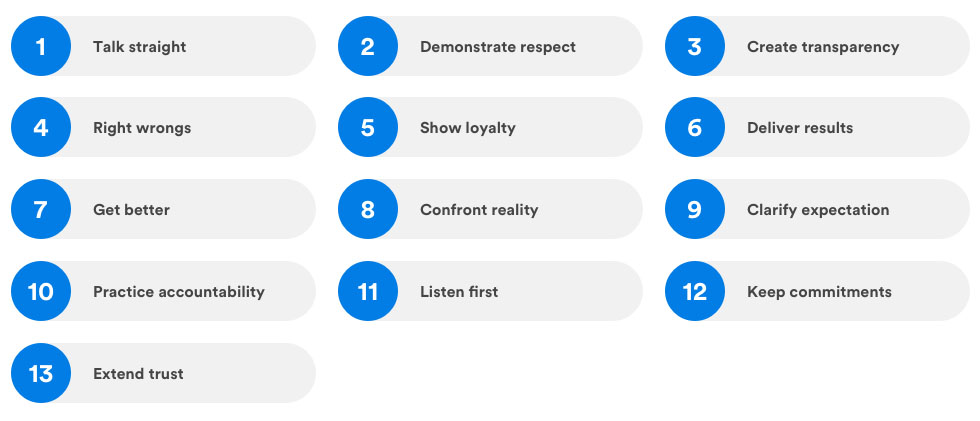Have you noticed that your employees are disengaged or resentful at work? Are they hesitant to share their thoughts with you? There are many things that could be influencing these behaviors, but trust could be at the root of the issue. Trust is an integral componenet to successful relationships, including those at work. An environment without trust breads discontent and disengagement. However, remedying that doesn’t come quick or easy. It is a process that takes time and dedication by everyone in an organization,most importantly those at the top. Consistency is also key; trust isn’t a destination. It’s something you have to continuously work to maintain.
Throughout this article, we show you why trust is so important in the context of work and how to build trust in your own organization.
So, what is trust?
According to the Huffington Post, “trust is a feeling of security that you have, based on the belief that someone or something is knowledgeable, reliable, good, honest, and effective.” At its core, trust is a feeling that exhibits itself by the willingness or choice to be vulnerable and take risks.
When the trust account is high,communication is easy, instant,and effective.
- Stephen R.Covey
Why is trust so important at work?
Trust is a currency. It’s essential for relationships of any kind to be established and to be maintained successfully. Trust must be exchanged between employers or managers and employees; it is not one-sided. When you are able to establish a high-trust environment, the benefits you experience are numerous
Compared with people at low-trust companies, people at high-trust companies report:

A Citigroup and LinkedIn survey found that nearly half of employees would forfeit a 20% raise for greater control over their work environnment.
Employees working in high-trust cultures:
- Enjoyed their jobs 60% more
- Were 70% more aligned with their companies’ purpose
- Felt 66% closer to their colleagues
- Had 11% more empathy for their workmates
- Experienced 40% less burnout from their work
- Earned an additional $6,450 a year, or 17% more than those working at low-trust organizations
Impressive, right? With all that being said, why wouldn’t you make building a high-trust environment a priority?
What does trust look like at work?
According to Psychology Today, when you are working in a high-trust environment, these are some of the things you might see:
- People are quick to take responsibility for mistakes instead of trying to assign blame to others
- People feel comfortable sharing their ideas freely
- People care about each other and offer to help without having to be asked
- People take initiative to volunter for projects and go above and beyond
- People reign in negativity and choose to focus on the positive
- Communication is open and easy
There are certainly more to add to this list,but you get the idea. When employers don’t act like they have anything to hide, employees don’t have to feel like they are constantly looking over their shoulders.
According to James Davis, a professor at Utah State University, three factors that drive perceived trust include:
Ability
Can they do what they say they can do?Are they able to perform what they say they can perform?
Benevolence
Does company leadership care about me? Trusted leaders are not ego driven, but want to do good for others.
Integrity
Do we have a shared set of values and live by those values? Are the other person's values those that I can agree with? Can I relate to that person because they believe what I believe?
Building trust in the workplace
Let’s start by talking about the things you shouldn’t do at work. These behaviors or actions that erode and undermine trust. They can include the following:
Lack of self-awareness
Many times, leaders can have good intentions, but may miss the mark. Managers may trust their employees, but the way they show it might come-off another way.For example, a manager that checks-in with an employee often may just want the employee to feel seen and heard, but the employee may feel like the manager doesn’t trust that the employee can complete the work independently.
Risk-averse
As mentioned in the definition of trust above, a willingness to take risks is part of allowing trust to grow and thrive. Leaders that try to control or restrict access to resources or information because it feels too “risky” are not exhibiting trust. Organizations that centralize decision-making abilities with only a few leaders can limit employee growth and creativity.
"Bottom line" mentality
Leaders that are solely focused on their own job security or making money can impede their employees’ growth. For example, a manager who is more worried about impressing his or her boss and swoops in at the last minute to take over a project is not showing trust. Managers should focus on developing relationships that empower employees to make their own informed decisions.
Trust begets trust.
You have to give trust to get trust.But how do you give or show trust? According to SHRM, the following are 13 common behaviors that build and maintain trust. Adopting these behaviors is akin to making deposits into a “trust account” with individual employees, teams, and the company as a whole. SHRM’s lisy is a way for you to tangibly display and offer trust to your employees.

SHRM counsels using a balanced approach to implementing these behaviours, as any of them exercised in the extreme could do more damage than good.
The best way to find out if youcan trust somebody is totrust them.
- Ernest Hemingway
Communicate, communicate, communicate.
If there is a gap in or lack of information, employees fill find a way to fill it with negative or inaccurate information. Leaders should strive to communicate openly and honestly with their employees. Harvard Business Review says. “Managers are often reluctant to share information and explain their decisions for fear of premature leaks, second-guessing,or dissension. Being transparent signals that you trust your employees with the truth, even in difficult circumstances.” Being that open can be a risk, but when carried out wisely, will pay off.
Give your employees the opportunity to shine. Don’t micromanage.
Telling people what to do might serve you well in the short-term, but it won’t help your employees succeed in the long-term. Focus on motivating your employees to do well, as opposed to just giving orders. Harvard Business Review encurages managers to delegate tasks as a means to inspire and make room for autonomy. Clearly setting expectations for results can help ensure top performance.
Be the example.
Good leaders seek to embody these values and those of their companies. They are loyal and demonstrate vulnerability. They empower their employees and allow them their voice in how they can do their jobs. When that genuinely happens, it sets the example for employees. It reminds them why they come to work and be proud of who and what they work for.